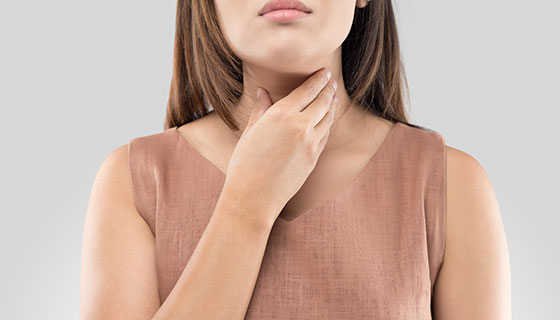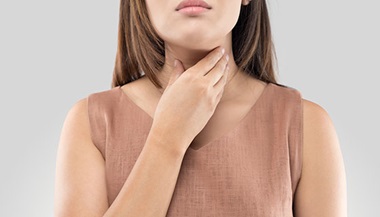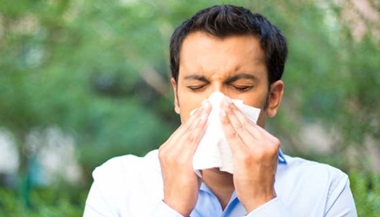Allergic Rhinitis in Children
What is allergic rhinitis in children?
Rhinitis is a reaction that happens in the eyes, nose, and throat. It occurs when allergens in the air trigger the release of histamine and other chemicals in the body. Normally allergens are harmless. But when a person has allergies, the body thinks these allergens are harmful and attacks them.
Special cells called mast cells release chemicals including histamine. The chemicals irritate nearby nasal tissue. This causes nasal allergy symptoms. When this happens in the lungs' breathing tubes, it can cause asthma symptoms such as coughing and wheezing.
Allergic rhinitis can happen on a seasonal basis or year-round. There is often a family history of allergic rhinitis, eczema, asthma, or food allergy.
What causes allergic rhinitis in a child?
The most common causes of allergic rhinitis in children are:
- Pollen from trees, grass, or weeds
- Dust mites
- Mold
- Cockroach waste
- Animal dander
Things such as strong odors and tobacco smoke can cause similar symptoms to allergic rhinitis. But these substances are irritants not allergens.
Which children are at risk for allergic rhinitis?
Children with other allergic diseases (such as eczema, food allergy, and asthma) are more likely to also have allergic rhinitis. About 8 out of 10 children with asthma also have allergic rhinitis. For these children, allergens are a common cause of asthma attacks. Children whose parents have allergies are also at greater risk of developing allergies.
Controlling allergies may help control asthma and eczema in some children.
What are the symptoms of allergic rhinitis in a child?
Each child may experience symptoms differently. Common symptoms include:
- Sneezing
- Stuffy nose
- Runny nose
- Itchy nose, throat, eyes, and ears
- Nosebleeds
- Clear drainage from the nose
Children with year-round allergic rhinitis may also have these symptoms:
- Ear infections that keep coming back
- Snoring
- Breathing through the mouth
- Not doing well in school
- A line or crease across the bridge of the nose from often wiping or scratching the itchy nose
The symptoms of allergic rhinitis may look like other conditions or health problems. Always talk with your child’s healthcare provider for a diagnosis.
How is allergic rhinitis diagnosed in a child?
In most cases, your child’s healthcare provider makes the diagnosis based on a full health history and physical exam. During the exam, your child’s provider may also find:
- Dark circles under the eyes
- Creases under the eyes
- Swollen tissue inside the nose
If this is the case, then the provider may refer your child to see an allergist. An allergist is a healthcare provider who is trained to do allergy skin testing. This testing will tell you exactly what things are causing your child to have symptoms.
How is allergic rhinitis treated in a child?
Treatment will depend on your child’s symptoms, age, and general health. It will also depend on how severe the condition is.
Treatment choices may include:
- Antihistamines
- Nose sprays
- Decongestants
- Medicines for asthma symptoms
- Allergy shots
What can I do to prevent allergic rhinitis in my child?
Experts don't know how to prevent a person from developing allergic rhinitis. But you can help prevent the symptoms by:
- Controlling your child's environment, such as using air conditioning during pollen season
- Having your child stay away from areas where there is heavy dust, mites, or molds
- Keeping your child away from pets
When should I call my child’s healthcare provider?
Call your child’s healthcare provider if your child has symptoms that get worse or new symptoms
Key points about allergic rhinitis in a child
- Allergic rhinitis is a reaction that happens in the eyes, nose, and throat. It occurs when allergens in the air trigger the release of histamine in the body.
- Allergic rhinitis can happen on a seasonal basis or year-round. There is often a family history of allergic rhinitis, eczema, asthma, or food allergy.
- Your child may be referred to see an allergist for allergy skin testing.
- Common causes include pollen, dust mites, mold, cockroach waste, and animal dander.
- Children with other allergic diseases such as eczema, food allergy, and asthma are more likely to also have allergic rhinitis.
- Treatment may include staying away from allergens and using medicines to treat symptoms.
Next steps
Tips to help you get the most from a visit to your child’s healthcare provider:
- Know the reason for the visit and what you want to happen.
- Before your visit, write down questions you want answered.
- At the visit, write down the name of a new diagnosis and any new medicines, treatments, or tests. Also write down any new instructions your provider gives you for your child.
- Know why a new medicine or treatment is prescribed and how it will help your child. Also know what the side effects are.
- Ask if your child’s condition can be treated in other ways.
- Know why a test or procedure is recommended and what the results could mean.
- Know what to expect if your child does not take the medicine or have the test or procedure.
- If your child has a follow-up appointment, write down the date, time, and purpose for that visit.
- Know how you can contact your child’s provider after office hours. This is important if your child becomes ill and you have questions or need advice.





